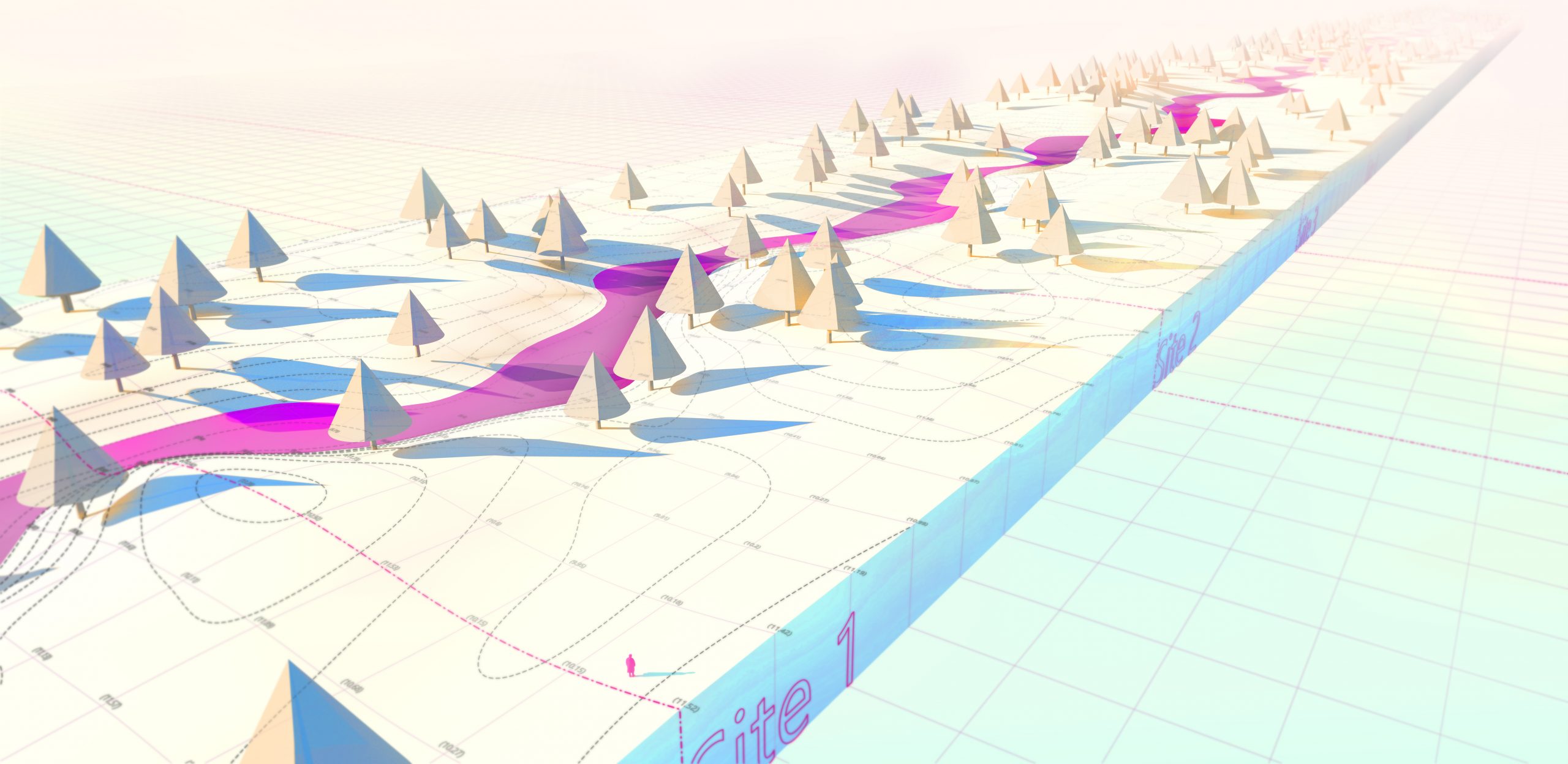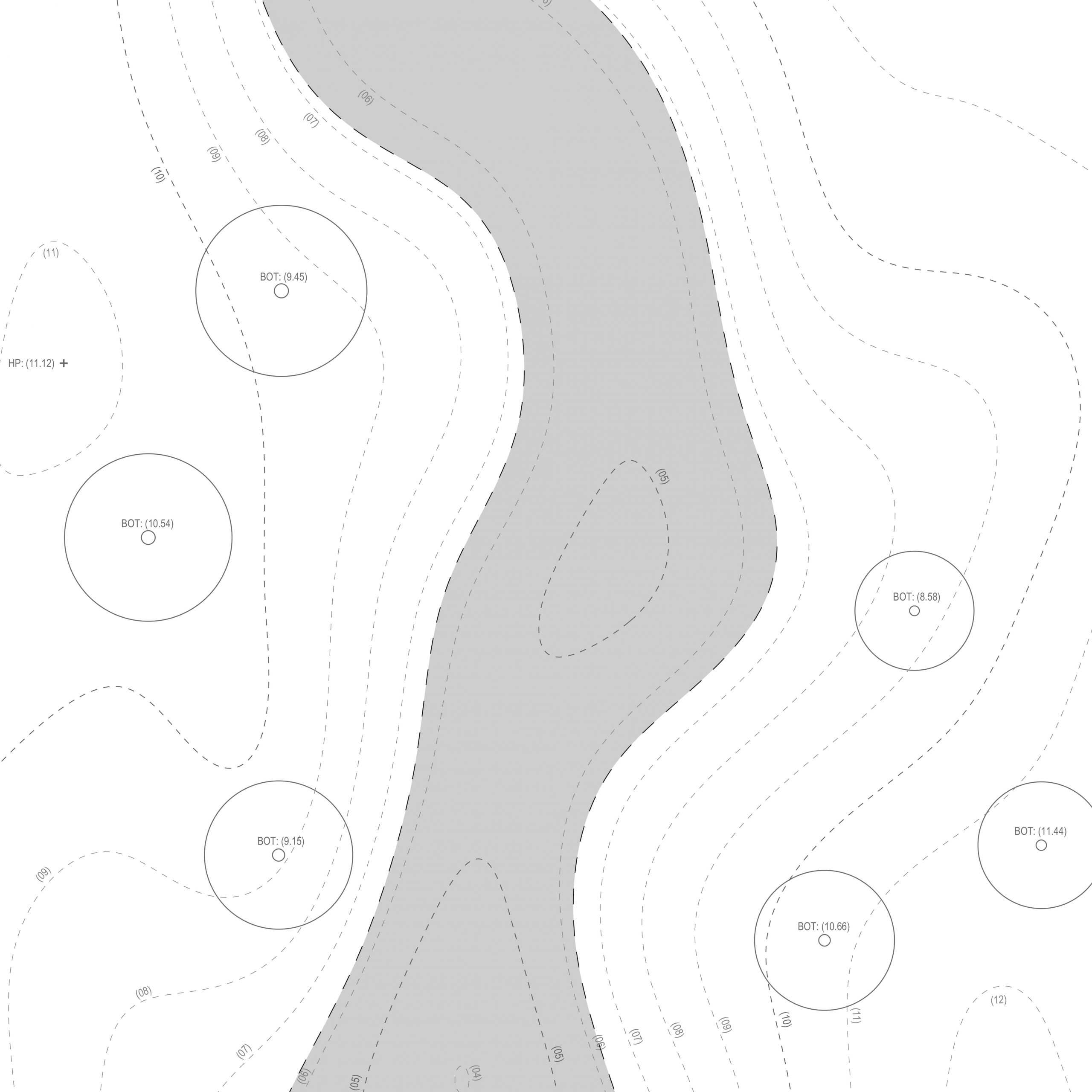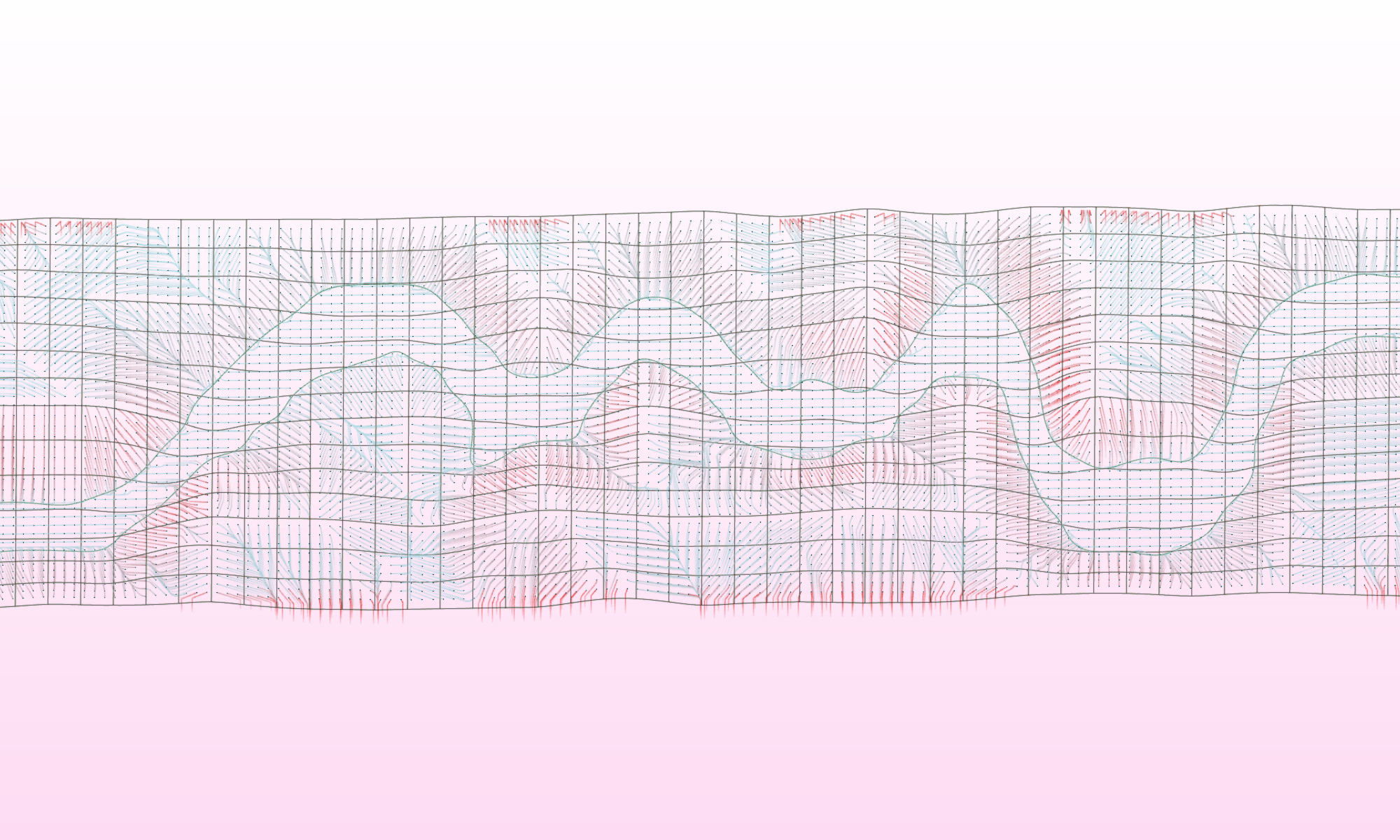Landform Generation
Algorithmic Site Generation for Teaching
Generating landform through algorithms is useful for a number of applications. While examples are provided throughout this site for algorithmic approaches to design particular landform elements, we focus here on holistic landform generation for the purpose of teaching grading & drainage design.
In teaching grading, we often need to provide students with a set of "existing" topographic conditions on which to work. The examples and Grasshopper file below take the approach of providing individualized site conditions for every student, randomized within parameters set by the instructor (for example, the site size, overall elevation gain across each site, elevation variation within each site, and tree placement & scaling). The manipulation of these variables allows the instructor to fine-tune the difficulty of the project. While there are advantages to providing a class of students with the same base file on which to individually work, this approach balances differentiation with similarity. Students are connected via their sites through an abstracted stream corridor condition; each site is similar enough to allow students to learn from each others' approaches. At the same time, each site is unique, forcing students to craft individual designs.

 sites generated for site design projects
sites generated for site design projects
After generating sites for the students to select, students are provided the generated terrain and asked to create a site model and technical base plan before designing to a specific programmatic requirement.

 samples of technical "existing condition" base plans generated from randomized sites
samples of technical "existing condition" base plans generated from randomized sites
